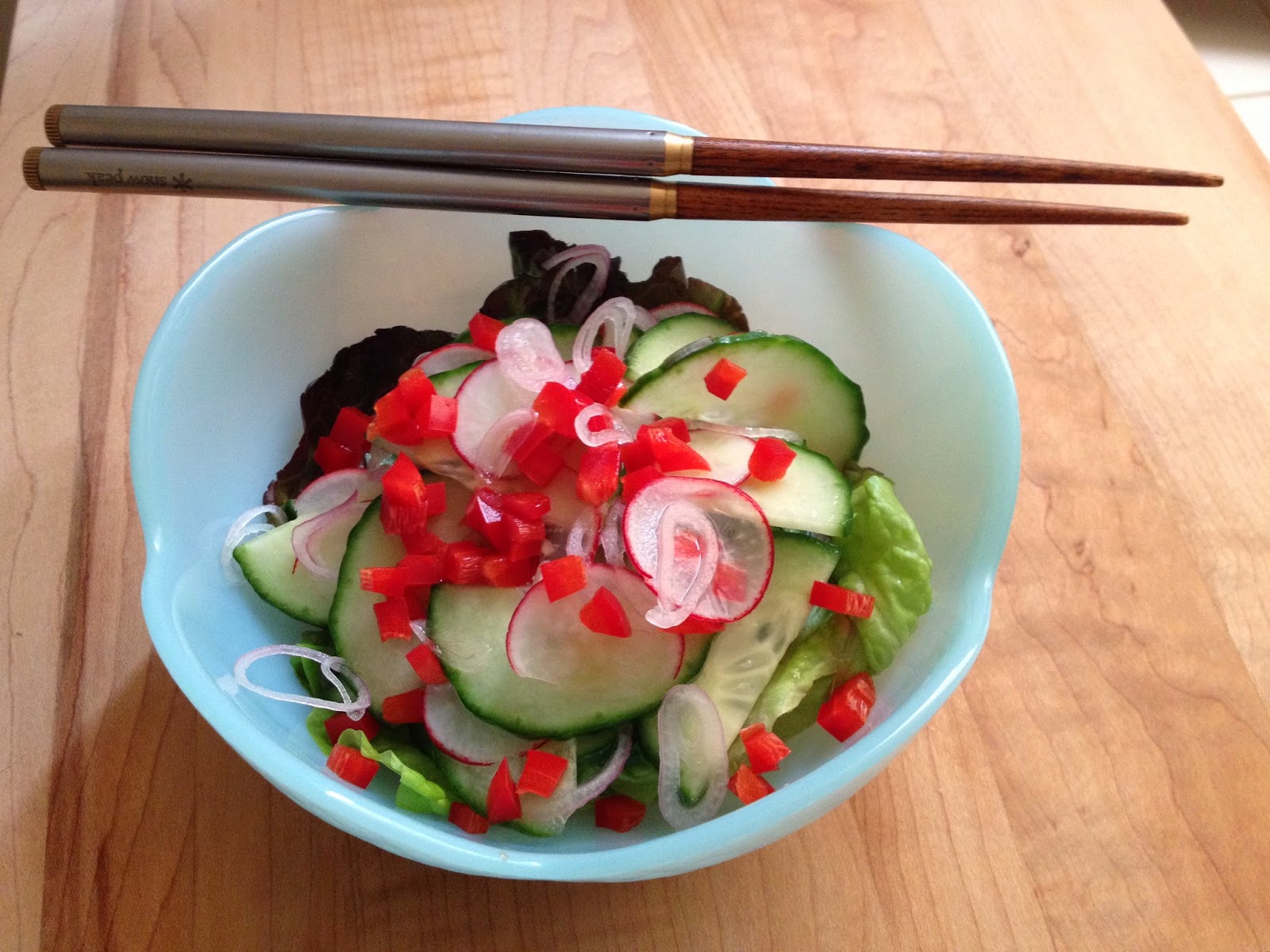 |
| Looks good, doesn't it? It is. Read on to see how easy it is to make! |
That does look good, but polenta is one of those things you break your arm stirring for hours, right? Nope.
It's true. Cooking polenta takes about 30 minutes total. But with a couple tricks provided by my culinary heroes of making difficult easy (while amping up the delicious) - America's Test Kitchen - we can make creamy, luscious polenta with very little stirring.
Preparation
3 & 3/4C water
3/4C polenta (Bob's Red Mill works great!)
pinch of baking soda
1/2t kosher salt
2T butter
1/3C grated Parmigiano Reggiano
Pepper
Bring the water to a boil in a heavy-bottomed 4Qt pot. Keep the lid on so the water doesn't evaporate.
Once the water is boiling, add a pinch of baking soda, and the 1/2t kosher salt. The baking soda will help break down the large grains of corn, and save you a lot of stirring.
While whisking the water back & forth, sprinkle in the polenta. If it foams up, whisk quickly, and if needed, turn off the flame. Stir down the raging boil, then turn down your burner to the lowest setting possible, cover, and let sit for 5 minutes. If you have a "simmer" burner on your stove, transfer the pot to it, and use the lowest possible flame.
.JPG) |
| Some newer gas ranges feature a "simmer" burner, which is ideal for cooking polenta. |
After 5 minutes, remove the lid and stir the polenta. It should be starting to absorb most of the water. Stir it well, replace the cover, and cook for 20 more minutes. If you can't get your flame as low as you'd like, check the pot after 10 or 15 minutes. You can stir as often as needed to keep the bottom from scorching, but ideally, you won't have to.
After 25 minutes total cooking time, your polenta might look done. Give it a good stir, and check two things:
- Give it a taste. If you're biting down on chewy pieces of cornmeal, it needs to cook for another 5 minutes.
- Also, stir it, and see how the polenta falls off the whisk. If it runs right off, it needs another 5 minutes.
Cooked polenta should be velvety-smooth in your mouth, but still hold up a bit on the whisk. (See the photo below)
.JPG) |
| Some of the polenta stays in the whisk, and the part that falls sits on top rather than sinking in. It's done! |
 |
| Perfectly cooked polenta is soft and flowing, but doesn't run off the whisk. When spooned into a bowl, it will settle a bit, but maintain a soft mound. |
Bonus! You can have soft polenta with just about any accompaniment for dinner, then save the rest for next level action the next day (or two).
 |
| Soft polenta poured into a lightly oiled dish sets firmly when chilled. This 8" dish will yield 4 generous wedges of polenta that you can sear, creating an irresistible crust |
To fry leftover polenta, cut a slice out of your chilled pan. Gently pat it dry on a paper towel. Water will spatter when it touches a hot pan, so you want to avoid that.
Heat a nonstick pan to high. Add 2T olive oil. Once the oil is heated, gently lay in the polenta, and don't move it for at least 5 minutes. If you have a spatter screen, you'll want to use it. Once one side is nicely golden, use a thin spatula to shimmy under the polenta and give it a quick flip. Ideally, flip it to a spot on the pan that has some oil. Again, don't move it for about 5 minutes. That way you'll get that lovely crust.
The magic? The center will be as soft and velvety as fresh polenta. Eat it as is, or top with a fried add and a dash of Tapatillo. Add some veggies if you like, and enjoy!
A Great Kitchen Tool
A Great Kitchen Tool
.JPG)
.JPG)
.JPG)
.JPG)



.JPG)


